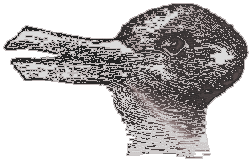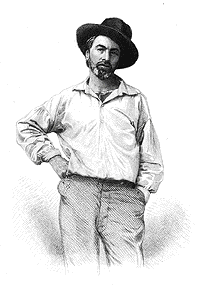 Gregory Eiselein
Gregory Eiselein Gregory Eiselein
Gregory Eiselein
 |
Course Description
After tossing off its colonial chains and writing itself into existence with the "Declaration of Independence," the United States entered the nineteenth century as a primarily agricultural society along the Atlantic coastline. The start of this century saw the first generation of people who were born "Americans," and what it means to be an "American" would concern this culture and its writers (like Whitman) for decades. No one definition would generate consensus, however. In fact, the character of nineteenth-century American culture may be better captured by images of difference and division (think of the Civil War, for instance) than by images of agreement and unity. By the end of this divided and tumultuous century, the United States stretched to the Pacific, and the revolutionary agrarian nation had become industrialized, significantly urbanized, imperial, and modern.
At the heart of this course are the key events and movements that changed the course of U.S. history and culture in the nineteenth-century: the aftermath of the American Revolution, Transcendentalism, Indian removal, slavery and abolitionism, the Civil War and its aftermath, immigration, lynching and Jim Crow, Pragmatism, and imperialism. We will examine the ways in which literature was a part of culture, the ways literature represented culture, and the ways literature made, shaped, or re-shaped the century. In other words, we will consider not only how literature might be a "reflection" of culture, but also how texts work in their culture as agents or obstacles for change.
Class Communication
Course Materials
The following class handouts are available here as PDFs.
Home | Department of English | Graduate Studies | Cultural Studies | Cultural Studies Conference | Kansas State University
This page was updated on 2 May 2008. Other pages on this site may have been updated more recently.
These pages are copyright © 1995-2008 Gregory Eiselein.